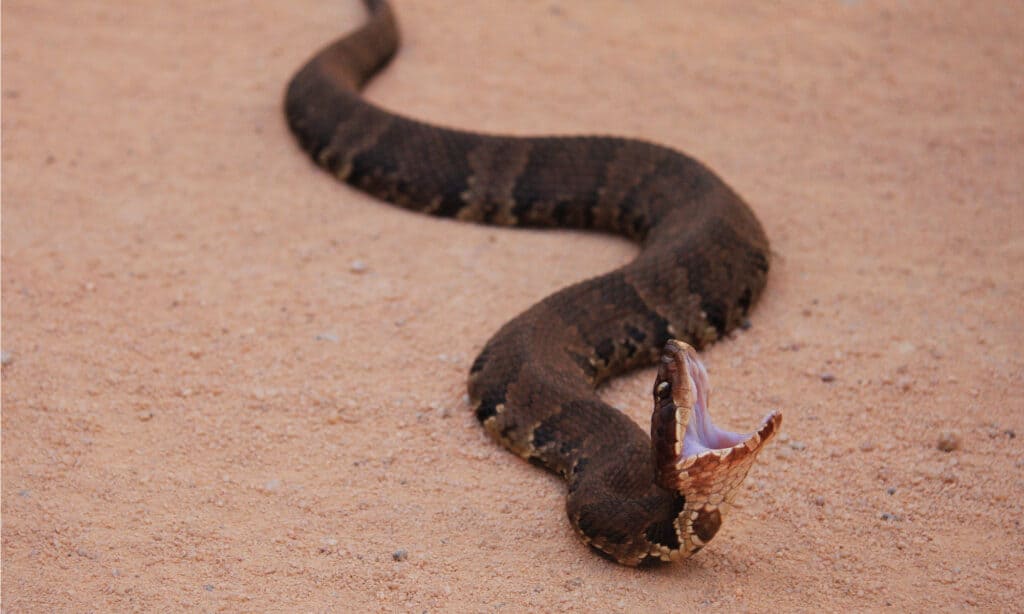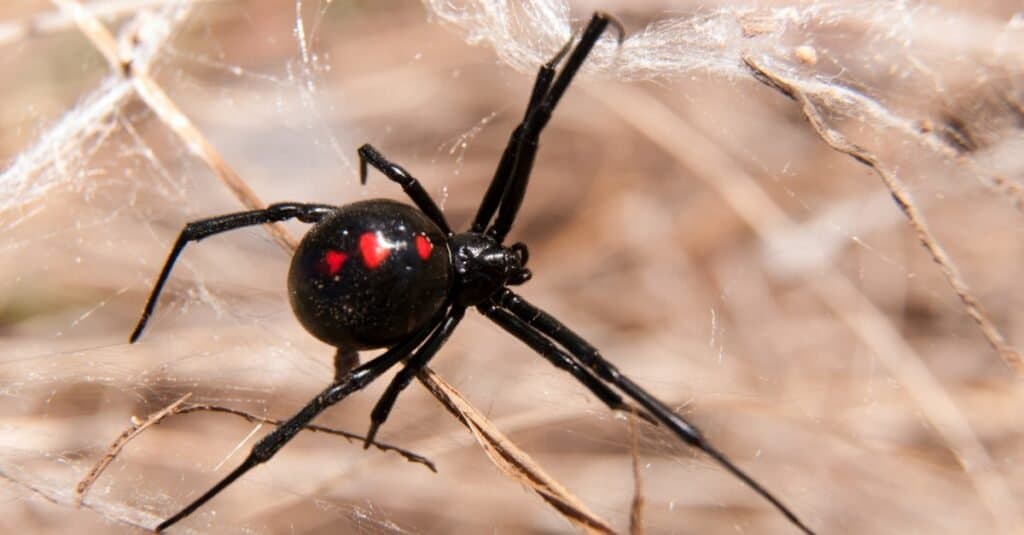Kentucky is known for the Kentucky Derby, the premier horse race of the country. It even has the Thoroughbred horse as its state animal. Although horse racing can be risky, it is not the most dangerous sport and Thoroughbreds are not considered dangerous, especially well-trained ones. There is a story of a jockey that died while riding in a race and unknowingly won the race! Frank Hayes was riding Sweet Kiss in the New York’s Belmont Park when he surprisingly crossed the finish line first to beat out the favorite. But right after crossing the line he toppled off the horse and the track doctor examined him right away. It was discovered that Frank had had a heart attack while riding and they were unable to revive him. Falls or collisions from other horses may be a risk in horse racing but heart attacks must rarely occur. Many of the deadliest encounters with animals in Kentucky are also very rare occurrences, but they do happen. So let’s take a look at some of the deadliest animals in Kentucky.
Are there any Venomous or Poisonous Animals in Kentucky?
Venomous Snakes in Kentucky

Cottonmouths are one of several venomous snakes in Kentucky
©Nathan A Shepard/Shutterstock.com
- Copperhead: The copperhead snake can be found throughout the state but keeps to itself. It would rather blend in with its surroundings than fight so there are very few incidents of copperheads biting people. They are reddish-brown and can be anywhere from 8 to 40”.
- Western Cottonmouth: Cottonmouth snakes in Kentucky are only located in the western part of the state usually in or around water. They are a more aggressive snake and if encountered will rise up and open their mouth (which is white like cotton) and show their fangs. Take their warning and back away since their bites are venomous.
- Timber Rattlesnakes: Timber rattlesnakes are located in the wooded areas of the state where they prefer living in the forest. In many states these rattlesnakes are threatened or endangered, but Kentucky has a strong population of them. They are a big snake, not just long but thick as well. They can grow to be 60” long! They prefer to stay away from humans and will remain still, relying on their camouflage, unless suddenly startled or handled it is unlikely they would bite.
- Western Pygmy Rattlesnake: These are a smaller snake, only 5 to 20 inches. They likewise have a smaller rattle which they will make noise with to warn those around them. They are only located in a handful of Kentucky counties. It is highly unlikely you would ever encounter one but they are greyish with dark splotches and a rust colored stipe on their back.
Venomous Scorpions in Kentucky
- Southern Devil Scorpion: They certainly have an intimidating name. However, although they are venomous they are not some of the most venomous scorpions. They are the only kind of scorpion native to Kentucky and can be found in rocky or wooded areas around lakes and ponds. They are nocturnal hunters and occasionally can make their way into homes. If you are stung by one seek medical attention, their bites are painful but not deadly.
Poisonous Spiders in Kentucky

Black widow spider bites rarely kill people, but it’s important to get medical attention as soon as you can because they can make you very sick.
©Sari ONeal/Shutterstock.com
- Black Widow Spiders: Black widows have a bad reputation from eating their mate soon after mating, but are they out to get humans too? Not at all. The most common times black widows bite are if they are surprised or threatened. They may spin their webs outside under rocks or in homes under appliances or furniture. If you are reaching under the couch to search for change you may be surprised by a black widow. If you do get bitten you should seek medical help because there are antivenin available.
- Brown Recluse Spiders: These are smaller brown spiders, about the size of a dime that have long skinny legs. They like to hide and stay out of sight so it is uncommon to see one. If you unfortunately disturb one and receive a bite you might not know it for a few hours when the pain sets in and a large ulcerous sore shows up. The venom destroys skin cells and it can take months to heal, leaving a large scar. Seeking medical help can lessen the poisonous effects. In the U.S. there are only an average of seven deaths per year due to spider bites.
Are Bears the most Dangerous Animal in Kentucky?

There are around 400 to 500 black bears living in the southeast region of Kentucky
©Jim Cumming/Shutterstock.com
There are around 400-500 black bears that live along the southeast border of Kentucky in what they consider the core bear territory. In fact, there are so many bears that there is a short bear hunting season to keep their numbers in check. Black bears are smaller than grizzly bears but can be incredibly dangerous. The males can be up to 400lbs and 3 feet tall at the shoulder. If angered and standing up they can be 5 to 7 feet tall standing on their hind legs.
There is an average of 11 bear attacks throughout the U.S. every year. The first recorded bear attack in Kentucky occurred on June 27, 2010 when a hiker was mauled by a black bear in Daniel Boone National Forest. Tim Scott was hiking with his wife and son when he went ahead and saw the bear. He threw his pack at it and tried to hide behind a tree but the bear was able to grab his leg and pull him out and eventually bit him. Other hikers nearby came to his aid and scared the bear away. Tim was treated at the hospital and released.
If you are hiking in bear country it is important to be aware of your surroundings and you should carry bear spray for instances like this. Don’t have the spray in the bottom of your daypack, but have it clipped to your belt or easily accessible.
Are bears the most dangerous animal at the Dairy Hut in Cumberland, Kentucky?
YES! A black bear in Cumberland broke through the window of the Dairy Hut when it got startled by a passing car. It looked around (decided to stick to its diet and not order any ice cream) and broke through another window to get out. Luckily it was before the restaurant had opened so no one was injured. The mountains nearby provide a great place for the bears to live. However, they do occasionally travel into town, usually during times when food may be scarcer. This bear didn’t end up getting any ice cream this time, but he may be back if it is a lean winter.
Up Next
- Top 10 Deadliest Animals In America
- Discover The 2 Types Of Rattlesnakes In Kentucky
- The 5 Best Fish To Catch In Kentucky This Summer
The photo featured at the top of this post is © Jim Cumming/Shutterstock.com
Thank you for reading! Have some feedback for us? Contact the AZ Animals editorial team.






